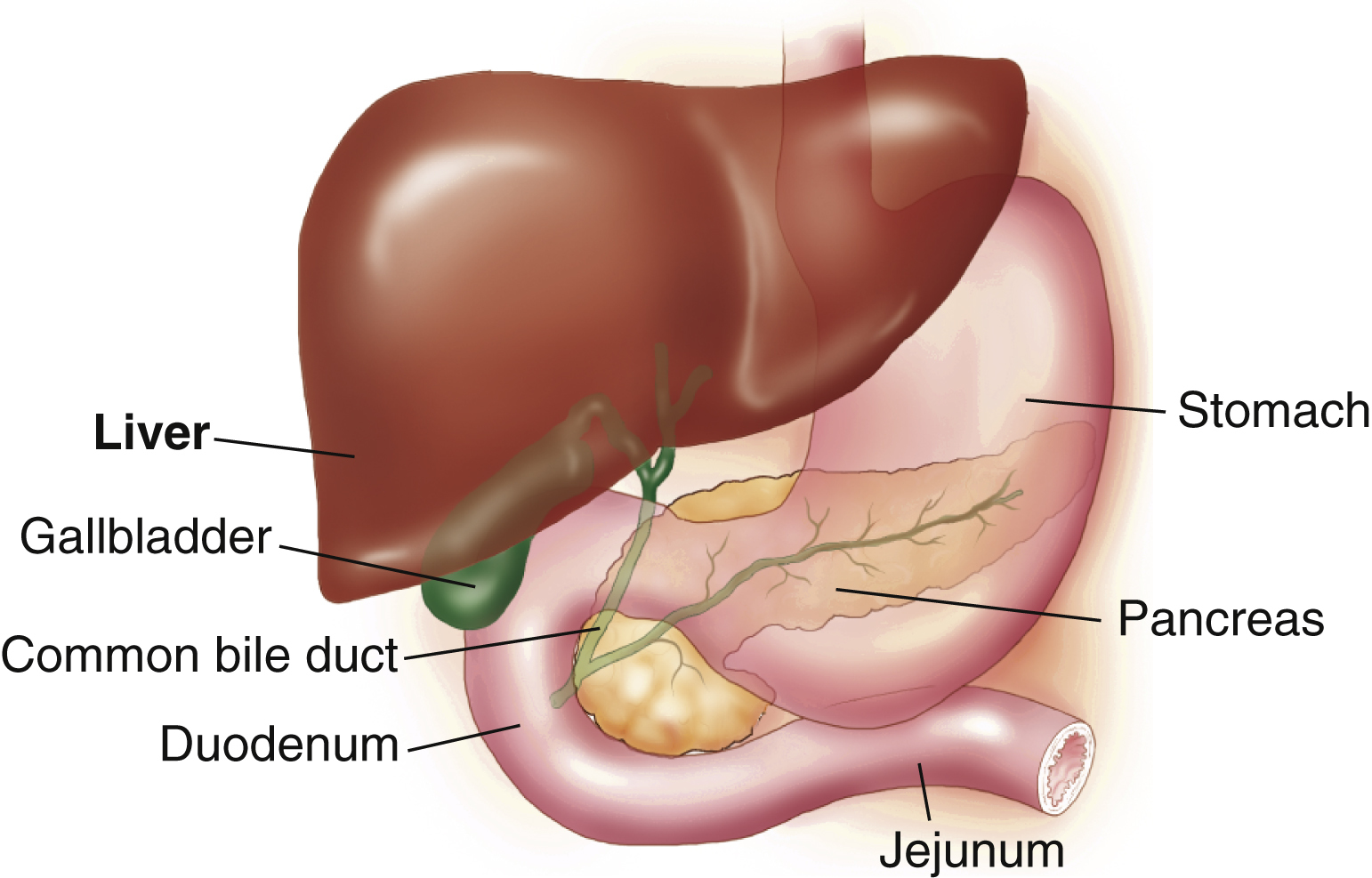liver [AS, lifer] , the largest gland of the body and one of its most complex organs. It is located in the upper cranial, right part of the abdominal cavity, occupying almost the entire right hypochondrium and the greater part of the epigastrium. In many individuals it extends into the left hypochondrium as far as the mammary line. It has a soft solid consistency, is shaped like an irregular hemisphere, and is dark reddish-brown. The ventral part of the liver is separated by the diaphragm from the sixth to the tenth ribs on the right side and from the seventh and eighth costal cartilages on the left side. The central section has a deep concavity that fits the vertebral column and the crura of the diaphragm. The liver is divided into four lobes, contains as many as 100,000 lobules, and is served by two distinct blood supplies. The hepatic artery conveys oxygenated blood to the liver, and the hepatic portal vein conveys nutrient-filled blood from the stomach and the intestines. At any given moment the liver holds about 1 pint of blood, or approximately 13% of the total blood supply of the body. The tiny lobules of the organ are composed of polyhedral hepatic cells. These cells communicate with small ducts that connect with larger ducts to form the left and right hepatic ducts that emerge on the caudal surface of the liver. The left and right hepatic ducts converge to form the single hepatic duct, which conveys the bile to the duodenum and gallbladder for storage. More than 500 functions of the liver have been identified. Some of the major functions are the production of bile by hepatic cells; the secretion of glucose, proteins, vitamins, fats, and most of the other compounds used by the body; the processing of hemoglobin for vital use of its iron content; and the conversion of poisonous ammonia to urea. Bile from the liver is stored in the hepatic duct, in numerous blood vessels and in the gallbladder, which is connected to the liver by connective tissue. The liver cells produce about 1 pint of bile daily. The hepatic cells also detoxify numerous ingested substances, such as alcohol, nicotine, and other poisons, as well as various toxic substances produced by the intestine. See also gallbladder.


